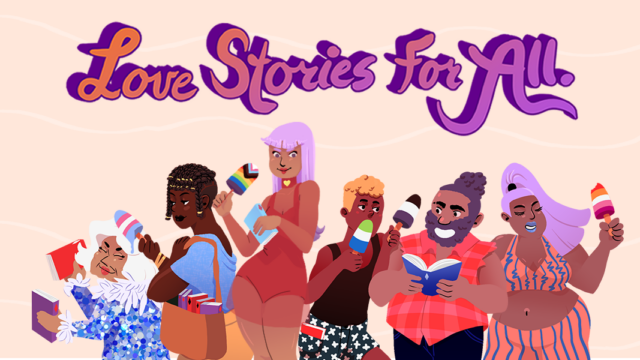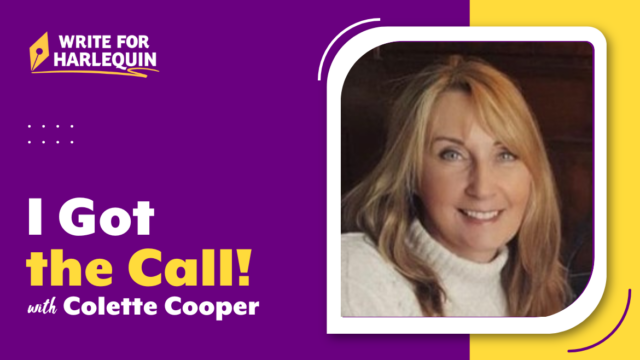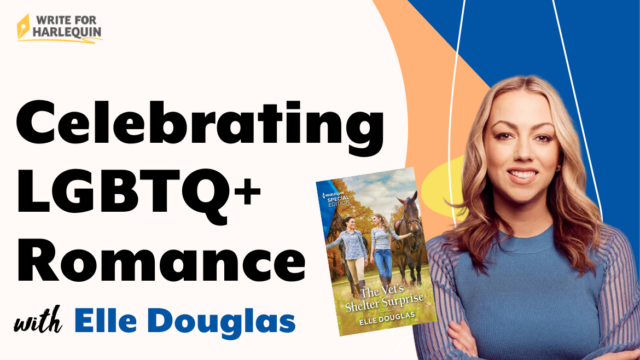
by Evan Yeong
Something you probably didn’t know about me is that I used to regularly run a blog largely focused on diversity in media. Imagine my delight, then, to discover that same emphasis here at Harlequin! It’s been an ongoing conversation within the SYTYCW team in particular, and one that gained renewed energy due to one of the Historical Writing Challenges many of you participated in last month.
In the second challenge, appropriately titled “Culture Clash”, I tasked you with writing a couple from two distinct worlds, while also “[encouraging] writers to think beyond the concept of race for this prompt!” That said, it was inevitable that of the many entrants some had to feature interracial relationships, which in turn inspired our team to address the difficulties in writing interracial relationships, and beyond that writing outside your own personal experience in general.
Context is Everything
To start things off, a number of you wrote romantic scenes between a Native American (or First Nations) person and a white person.
I want to be upfront and state that this post is by no means an attack on, or reprimand of, anyone who did this. There are no accusations here, and I like to think the editorial feedback given supports me in this. I also want to acknowledge the research and sensitivity that went into so many of these submissions.
With that out of the way, let’s talk about how crucial context is when writing Historical Romance. One amazing benefit to the genre is that not only can writers research and plumb the depths of a particular era, but they can see what came both before and after it; we know how past events inevitably led to our present day. Hindsight truly is 20/20.
Many of us know about the violent clashes between Native Americans and European settlers, but less so about the diseases that culled up to 90% of the indigenous population that preceded them, or the cultural genocide enacted by residential schools that followed after. All of that is in addition to how American fiction has romanticized the multitude of different distinct tribes. The now defunct Romantic Times outlines Native American Romance, stating that it depicts Native Americans “as exotic figures, untamed and possessing a freedom to be admired and envied.”
This isn’t to say that true, genuine love never blossomed between First Nations people and colonists, or that these stories are off-limits to romance writers. Instead this is a reminder to consider the implications of a couple where their differences carry with them such a distinct balance of power. Admittedly that’s not always as easily recognizable as 2015 RITA nominee For Such a Time, a Historical Romance between a Jewish woman and the Nazi commander of a concentration camp.
When we write any relationship, we do ourselves (and the people groups in question) a service by being aware of not only the couple’s context within their own time and place, but also the one we currently live in. Consider how modern romance readers value agency, diversity, and authenticity in addition to the sizzling chemistry they’ve always been drawn to.
Who Are You? (Who? Who?)
Okay, so I’ve written about the context of the story itself, but what about our own? Every one of us takes up a particular space in the society and culture we exist in, and that has an immense impact not only on how our writing is perceived, but how we in turn perceive the subjects of our writing.
One bit of editorial feedback that was given last challenge referred to writing from the “dominant culture,” which for many of us (I can’t speak to where we all live) is English-speaking, white, and (Protestant) Christian. When so much of our lives caters to that specific demographic, those who belong to it can find it difficult to notice the inequalities that others may face. This may be as simple as not having to worry about explaining Christmas, whereas Ramadan might require further clarification. When writing interracial relationships this often means strongly identifying with one half but making broad guesses with the other.
Does this mean you should take to heart that endlessly repeated bit of writing advice: Write what you know? I certainly don’t think so. While it’s important for publishing to represent a diverse range of voices that speak from myriad life experiences (see: our Romance Includes You mentorship), there are countless authors from every walk of life that write characters they could never fully relate to. The key factor is that the truly successful do their research.
With the rise of #OwnVoices, finding and reading books that have authors and characters from the same marginalized group is easier than ever (though the publishing industry has lots more work to do!). An excellent first step in learning about others is by tapping into their work. I do want to caution you about not asking people who aren’t a part of the dominant culture for “permission” to write their stories. Engage in real, authentic relationships and how they think and feel will make themselves readily apparent to you.
To cap off this section, it’s worth asking yourself why you want to write the particular romance you have in mind. Furthermore, why (assuming it gets published) you’re the right person to bring it to the public. With a few major exceptions, I would never tell anyone not to write anything, but I will always advocate for being better informed and searching your own intentions.
Do Your Best (And Try Not to Worry!)
It’s safe to say that all writers, romance or otherwise, want to do good (or better yet, great) work. There’s a desire to craft sizzling chemistry, of course, but also a need for accuracy that paralyzed a 10th Grade me when faced with the daunting challenge of portraying the life of a regular North American teen (I lived in Thailand at the time). In addition, I don’t believe that most people want to offend or hurt others with their writing. For romance especially the intention is to play to positive emotions, to lead readers through twists and turns but ultimately a happily ever after.
The thing is, you know what they say about good intentions…
Luckily for published authors, the road from manuscript to paperback has multiple pit stops along the way to account for everything from comma splices to misspelled brand names to whether or not an interracial relationship might need a little more refining. Your story will be given a line edit, copy edit, and proofread, and each person responsible is hard at work to account for the blind spots of those ahead of them.
Some books are even assigned sensitivity readers who are explicitly tasked with giving feedback based on their own lived experiences.
Whether you’re fortunate enough to have access to all of these resources, are freelancing a single copy edit, or are asking a friend to please read your work, my most important piece of advice is be humble. Or in other words, be open to criticism, changing parts of your work, and being wrong.
Writing is already such an emotional process to start with, and the fear of being framed as not politically correct (to put it gently), or generally unaware, is immense. Just remember that these people are here to support you. No one who is working on your book is doing so as a secret ploy to expose your deficiencies. To quote mob accountant Otto Berman, it’s “Nothing personal.” Try not to take it that way!
I’m going to end by flatly ignoring my college professors’ writing advice on how to wrap up an essay, ironically leaving you all with a little writing advice of my own: In summary, when writing interracial relationships and other experiences outside of our own it’s important to do research when possible, query our own biases, and be open to accepting criticism. As a final important reminder, don’t be afraid to ask for help! This is a topic we’re going to keep discussing on SYTYCW, so if you have any questions please don’t hesitate to let us know-



